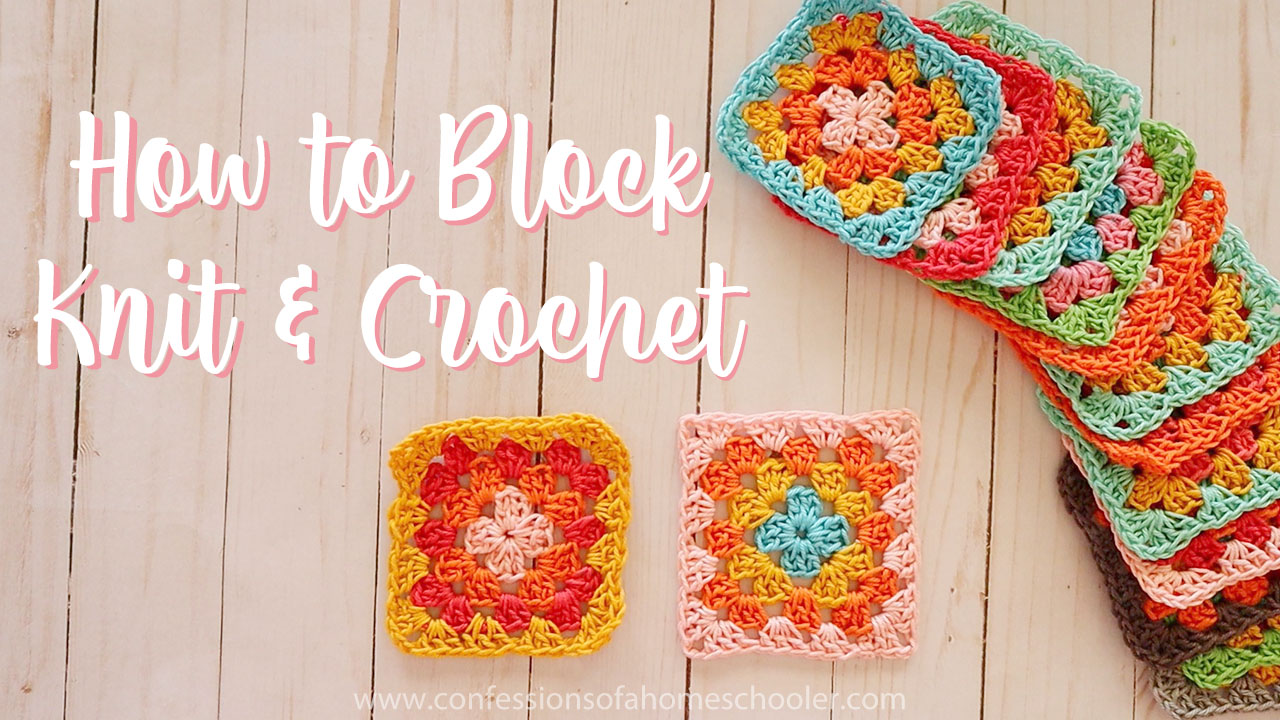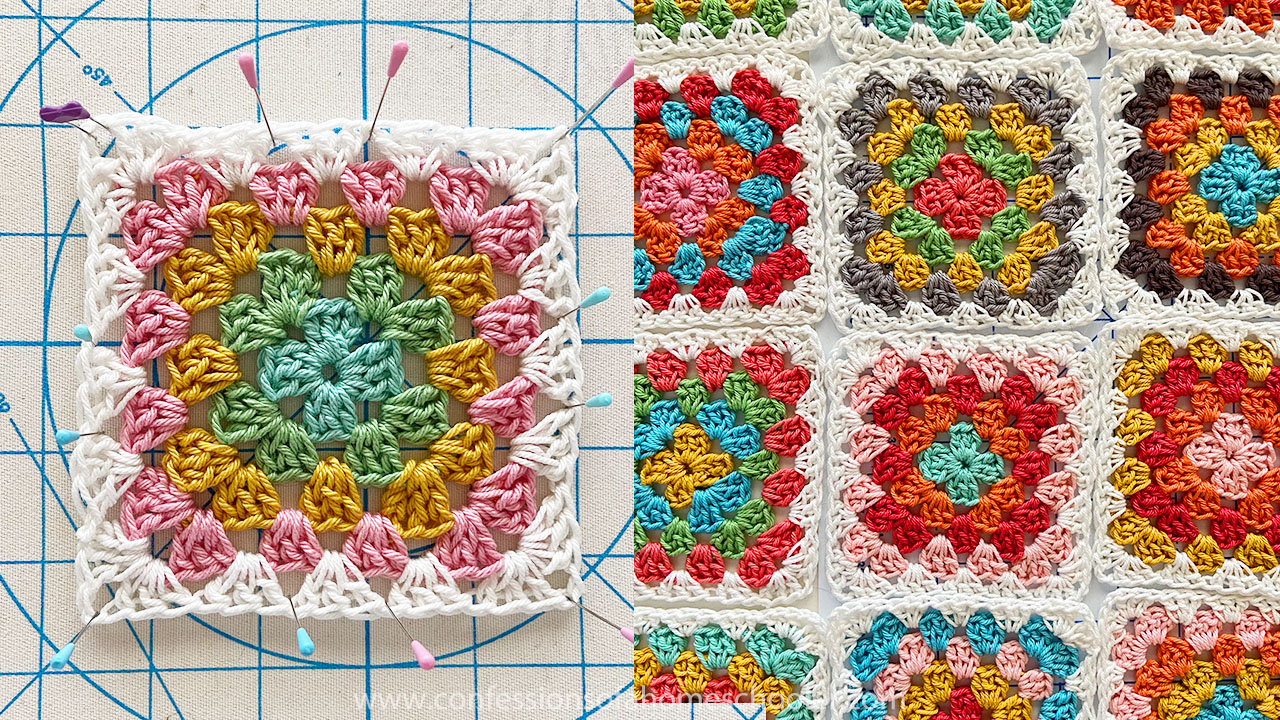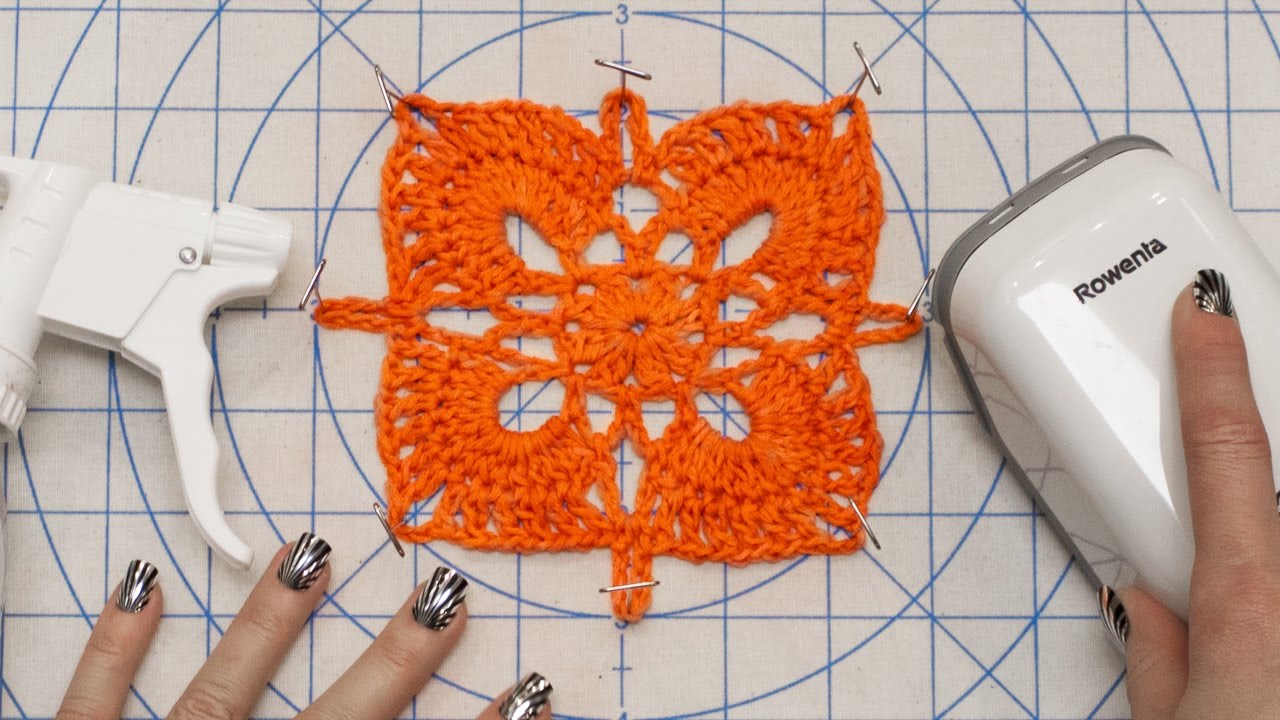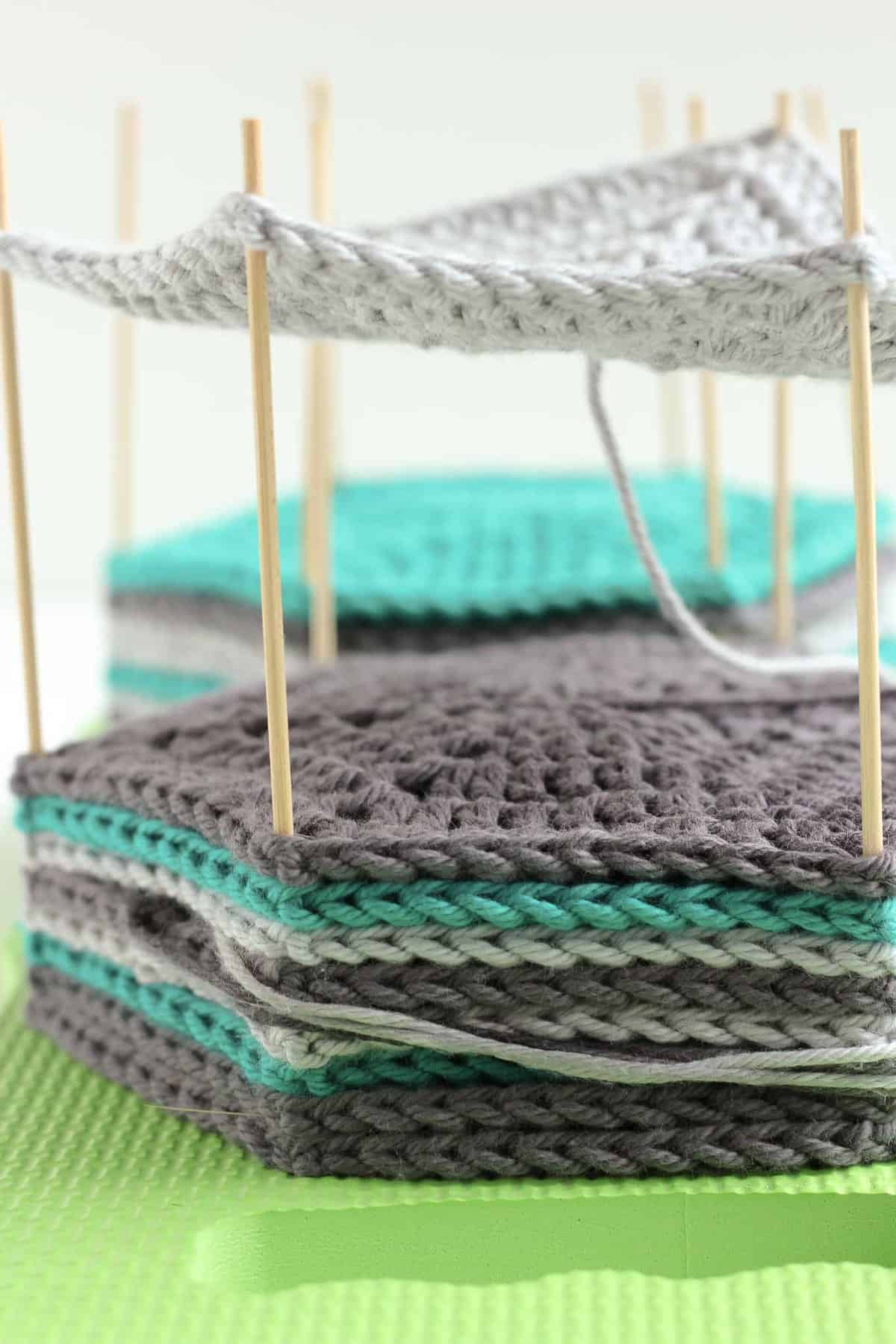Submerge the crochet piece you want to block into the water. Web how to block crochet. Different blocking processes are suited for different textiles and crochet creations. Let’s take a closer look at each of these crochet blocking supplies. Web wet blocking entails fully submerging a finished crochet project in water, gently squeezing out the excess water, and pinning it to the desired shape on a blocking surface.
Blocking helps adjust the size and shape of the crochet item. Web you can spray block (demonstrated here), wet block (using a similar technique but starting by submerging your pieces in water until they’re saturated), or steam block (using a steamer or a steam iron after you pin the dry pieces). To balance out this skewing and make a truer square, you will periodically work a “reset round,” where you will make (2 dc, ch 2, 4 dc) into each corner rather than the regular (3 dc, ch 2, 3 dc). Fill your sink or basin with lukewarm water and add some wool wash. Why do you block crochet projects?
Always remember to use rust proof pins when blocking to avoid getting orange marks on tour work! Blocking a garment gives it a more fabric feel and provides a nice flow and drape. Web ever made a sweater that is just a bit too snug? Blocking helps you get flat corners and straight edges and helps fix unwanting curling. Do i have to block everything i crochet?
Web natural fibers like wool & alpaca benefit from full wash blocking. Crochet projects that benefit from blocking. If you need more help with washing and blocking your crochet & knit items, we have. Web if you’re wondering why to block your crochet or how to block crochet, this article is for you! When to use crochet blocking. Web the best way to block a crochet blanket. To balance out this skewing and make a truer square, you will periodically work a “reset round,” where you will make (2 dc, ch 2, 4 dc) into each corner rather than the regular (3 dc, ch 2, 3 dc). Remove the blanket from the washer or water and wring it out. Blocking involves wetting a square of yarn and pinning it to a blocking mat or board to achieve a better aesthetic, change its shape, or increase its size. And do i really need to block my crochet sweater? What you need to block crochet: Web to block crochet, you’ll need a mat or board, rustproof blocking pins or stainless steel blocking wires, and a source of moisture such as a basin of water or a spray bottle. Most crocheters employ acrylic or other synthetic fibers to create blankets. Blocking a garment gives it a more fabric feel and provides a nice flow and drape. Web you can do that with either water (wet blocking) or steam (steam blocking).
Blocking Helps You Get Flat Corners And Straight Edges And Helps Fix Unwanting Curling.
Blocking involves dampening the crochet fabric, shaping it to size, pinning it out and allowing it to dry. Fill your sink or basin with lukewarm water and add some wool wash. What you need to block crochet: Natural fiber yarns such as wool, cotton, and linen.
For My Merino Wool Project I Prefer Wet Blocking.wha.
Web wet blocking entails fully submerging a finished crochet project in water, gently squeezing out the excess water, and pinning it to the desired shape on a blocking surface. Web if you’re wondering why to block your crochet or how to block crochet, this article is for you! Web some stitch patterns tend to naturally curve or slant (stockinette stitch in knitting our jasmine stitch in crochet), blocking is a great solution to straighten edges and help them lay flat. And do i really need to block my crochet sweater?
This Method Is Highly Effective In Producing A Crisp, Professional Finish, Especially For Lace And Intricate Stitch Patterns.
I don’t believe it’s essential to block every piece of crochet. Results are less predictable with synthetics. Lacework or open stitch patterns that you want to block aggressively. Web how to block your crochet project.
Then, Roll The Blanket In A Towel To Blot More Water Out.
Web how to block crochet. Web this phenomenon may be less noticeable with animal fibers (like wool or alpaca), but it will be more apparent with plant fibers (like cotton). Web © 2024 google llc. Web natural fibers like wool & alpaca benefit from full wash blocking.
![Blocking Crochet Easy Step by Step Tutorial [2024 Update]](https://crochetpenguin.com/wp-content/uploads/2020/06/Blocked-Crochet-Squares2.jpg)








